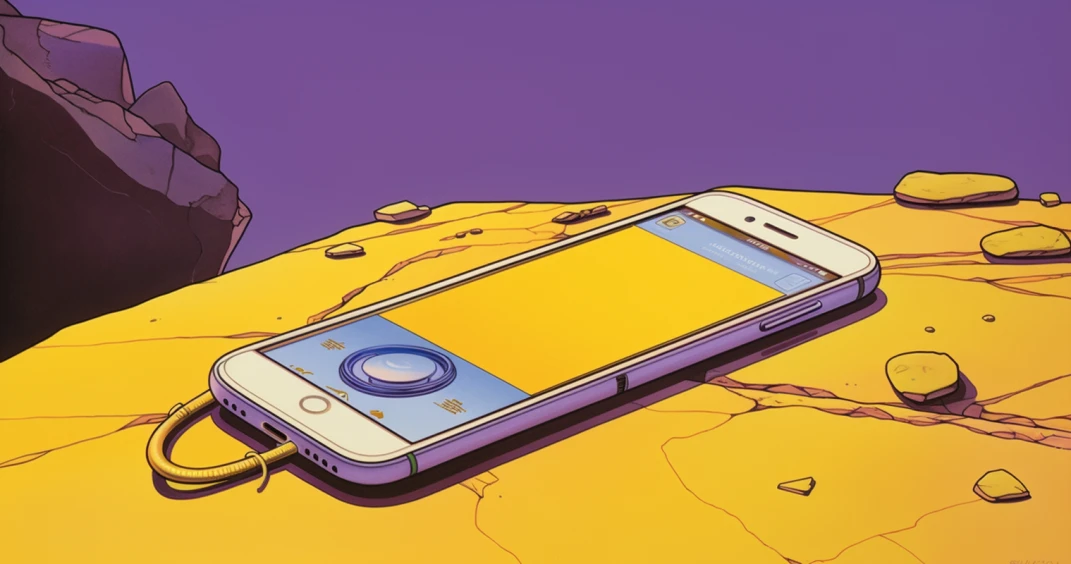Marketing card games may seem like a daunting task, especially when you don’t have a lot of mobile game marketing experience.
But don’t stress – I’m here to help.
In this guide, I explain everything you need to know about marketing card games to get more users. You’ll also find out how to create perfect ads for a card game with examples from top publishers.
Let’s get started!
Brief Overview of the Card Games Market on Mobile
Whether you’re considering getting into mobile card games or have already published a card game, it’s vital to have a solid grasp of the market landscape.
Let’s start with some eye-opening numbers.
According to Statista, the total revenue for the card games market reached a whopping $9 billion in 2022. And that’s not all – the future looks even more promising with an expected annual growth rate (CAGR) of 13.54% from 2023 to 2027, potentially bumping the market volume to $18 billion by 2027.
What’s driving this revenue, you ask?
Well, the earnings model is interesting.
One-third of this revenue stems from in-app purchases, while the lion’s share – two-thirds, to be precise – comes from in-app ads. It’s worth noting that the average revenue per download is around $5.39.
Now, where in the world is all this action happening?
A global comparison shows that the United States is the powerhouse, generating the most revenue in this segment.
And let’s not forget about user engagement. The card games market recorded more than 1.7 billion downloads in 2022 alone, which underscores the genre’s popularity among players.

Top Card Games of 2025
Before we move on, it’s useful to know the top performers in this sector.
I have compiled two lists: top card games by revenue (player spending) and downloads. The data for these lists come from AppMagic, a leading mobile intelligence platform.
Top Card Games by Revenue
- Solitaire Grand Harvest by Supertreat – Playtika
- Tiki Solitaire TriPeaks by Scopely
- Phase 10: World Tour by Mattel163
- Fishdom Solitaire by Playrix
- UNO! by Mattel163
- Spades Plus by Zynga
- Skip-Bo by Mattel163
- Solitaire Home Design by Betta Games
- Jawaked: Games and Friends by Jawaker
- Spades Royale by Beach Bum
Top Card Games by Downloads
- UNO! by Mattel163
- Solitaire – Classic Card Games by Guru Puzzle Game
- Fishdom Solitaire by Playrix
- Solitaire – Classic Card Games by nerByte
- Callbreak Master by Hippo Club
- Durak Online by R-Soft
- Callbreak by Tesla Tech
- Spider Solitaire by Easybrain
- Solitaire: Classic Card Games by Tripledot Studios
- Solitaire.net by Easybrain
Tips for Marketing Card Games and Getting More Users
So, you’ve seen the numbers and understand that the card games market on mobile platforms is flourishing.
But knowing the statistics is just the first step.
The real challenge lies in effectively marketing card games to capitalize on this growth and attract a dedicated player base. In the following section, I list proven strategies and tips that can help you not only get more users but also sustain their interest over time.
Target Audience
One of the foundational aspects of marketing card games is identifying your target audience. Skipping this step would be like shooting arrows in the dark – you may hit something, but it’s unlikely to be the bullseye.
So, why is this so crucial?
Understanding your target audience gives you valuable insights into demographics, interests, and behavior. These metrics form the basis of your marketing strategies and help you craft highly targeted campaigns.
Now, what kind of players are we generally talking about when it comes to mobile card games?
They are often individuals looking for a casual yet engaging gaming experience.
Many are motivated by the desire to relax and pass the time, categorizing them as casual players. Knowing this helps you align your marketing messages and ad creatives to resonate with what actually interests and motivates your audience.
Choose the Right Ad Networks
Selecting the appropriate ad networks is the next important step.
But why does this matter?
Because the right ad networks can significantly amplify your reach, targeting capabilities, and ROI.
Working with multiple ad networks when marketing card games isn’t just a good idea; it’s often essential for diversifying your advertising avenues. This approach enables you to leverage the unique strengths of each platform, ensuring that your campaigns have maximum reach and impact.
When selecting an ad network, keeping an eye on certain key performance Indicators (KPIs) can guide your decision. Metrics like CTR, CPI, and LTV should be front and center.
According to AppMagic, the majority of impressions for card game ads come from Unity, Facebook, Google AdMob, ironSource, AppLovin, and Fyber.
Let’s briefly explore the strengths of each:
- Unity: Known for excellent user acquisition and monetization capabilities for mobile games and as a developer-friendly platform.
- Facebook: Offers unparalleled demographic targeting and boasts a massive user base.
- Google AdMob: Excels in scalability and offers excellent analytics tools.
- ironSource: Ideal for performance-based campaigns and offers excellent user acquisition tools.
- AppLovin: Strong in data analytics and creative optimization.
- Fyber: Specializes in maximizing revenue through high-quality ad formats.

Focus on Both Quantity and Quality for Ad Creatives
When it comes to ad creatives for marketing card games, balancing quantity and quality is key.
Let’s start with the need for multiple ads.
You’ll require a wide range of ad creatives because no single ad will appeal to every type of player. Plus, you’ll have to test ads, so you’ll need different versions of the same ad with small changes to measure their success.
But don’t let the focus on having many ads make you forget about quality. The mobile gaming market is crowded and people are swamped with ads every day.
To grab attention, your ads need to stand out.
Keeping up with current trends in card game ads is a good idea, but don’t be afraid to try new things. Experiment with different formats, layouts, or calls to action, as long as they fit within your overall marketing strategy.
Lastly, being guided by data is crucial.
Keep an eye on metrics like cost per install (CPI) or how well an ad retains players to know if your campaigns are hitting the mark. These performance indicators can help you fine-tune your marketing strategy.
Boost User Acquisition with ASO
While the spotlight often shines on paid advertising campaigns, many game studios overlook the role of App Store Optimization (ASO) in their user acquisition strategy. However, a well-optimized app store page can be a goldmine for attracting new users without spending a dime on ads.
Think about it this way: when a player clicks on an ad for your card game, where do they land?
The app store.
A well-crafted page can not only catch their eye but also seal the deal, encouraging them to hit that download button.
Visual elements are the first things that grab attention, so pay attention to your app icons, screenshots, and promo video. While it’s useful to observe what your competitors are doing and spot trends, strive to differentiate your game. You don’t want to blend into the sea of similar apps.
As for text-based elements like the game title, description, and keywords, this is your playground for SEO within the app store. Use ASO tools for keyword research to make sure your game appears in relevant searches.
A few more ASO tips to consider:
- Keep your app store description updated with the latest features or in-game events.
- Use A/B testing to experiment with different visual elements and descriptions.
- Monitor app reviews and ratings, and be proactive in addressing any issues mentioned.
Ad Creative Trends and Examples for Marketing Card Games
The trends for ad creatives are ever-changing and influenced by many factors including player behavior, advertising costs, and market competition.
In this section, we’ll examine some current trends and examples that are shaping the way card games are marketed today. This will give you insights into crafting ads that not only capture attention but also drive user acquisition.

Simple Gameplay Ads
Sometimes, simplicity speaks volumes.
This is particularly true for ads that focus on showcasing gameplay footage.
Why does this work so well?
Gameplay ads give potential players a taste of what to expect and provide immediate clarity. This transparency can be incredibly compelling, convincing viewers to take the next step – downloading your game.
A recurring theme in these ads is relaxation.
The gameplay footage is often set against tranquil nature backgrounds accompanied by soothing music. This tends to attract players looking to unwind or pass the time rather than those seeking high-stakes competition.
Creating an effective gameplay video ad for your card game doesn’t have to be a complex affair.
Here are some tips:
- Use high-quality footage that accurately reflects the game.
- Highlight unique game mechanics or features without overwhelming the viewer.
- Incorporate user testimonials or reviews, if possible, to build trust.
- Keep it short and sweet, aiming for 15 to 30 seconds.
Playable Ads
Playable ads are interactive previews that allow potential players to engage with a mini-version of the game right within the ad itself.
For marketing card games, these types of ads are particularly effective.
Why?
They offer a hands-on experience, removing the guesswork and allowing potential players to grasp the game’s mechanics.
These ads serve a dual purpose if your card game isn’t as universally understood as, say, Solitaire. They can act as quick tutorials, guiding players through the basics and encouraging them to download the full version for a more comprehensive experience.
When it comes to producing a compelling playable ad for your card game, consider the following:
- Keep the interactive session brief but engaging. Aim for a 30-second experience that encapsulates your game’s essence.
- Highlight the most enjoyable or unique aspects of gameplay to entice the player.
- Make sure the transition from the ad to the app store is seamless for a quick and easy download.
UGC Ads
UGC, or user-generated content ads, represent a powerful marketing strategy that leverages the authenticity of fan-created content. Essentially, you hire content creators to produce videos that appear low-budget and genuine, as if actual fans of your card game made them. But also, content creators can make content involving gimmicks, pretend scenarios and/or tiktok trends, all promoting an app directly or indirectly.
The appeal of these ads lies in their authenticity and relatability, making potential players more inclined to trust the game’s quality and download it.
Going the extra mile, you could even employ celebrities to boost your game’s profile. Platforms like Cameo make this a feasible option.
Take, for instance, Solitaire by MobilityWare, which features Brian Baumgartner, better known as Kevin from The Office. While his video for non-commercial use on Cameo is fairly cheap, $195, an advertising video with a commercial license is more expensive, typically from $1000 upwards.
Hiring a well-known face for an ad can yield a significant return on investment.
However, the key to success lies in maintaining authenticity. Even when hiring celebrities, the aim is not to make the campaign look like a high-profile endorsement.
Instead, the goal is to make it seem as if the celebrity genuinely enjoys your game and wants to share it with their followers. This approach blends the star power and familiarity of a known personality with the down-to-earth quality of UGC.

Ads Featuring Meta-Layers
Ads that spotlight the meta-layers of a card game can be incredibly effective. A meta-layer goes beyond the basic gameplay, adding elements like farming, building, or exploring to the core card mechanics.
Showcasing these additional features in ads can help you tap into a wider audience, beyond just card game enthusiasts.
Why does this work so well?
It’s all about motivation-based creatives. These ads target potential players based on diverse motivations for engaging with mobile games, not just the love of card games. So whether someone is into farming simulations or loves exploration games, featuring meta-layers can pique their interest.
For instance, Solitaire Grand Harvest, a top-grossing card game, includes several meta-layers like farming and mini-games. Ads for this game often feature these layers, making the game attractive to a more diverse set of players.

Humor in Ads
Let’s face it, we could all use a good laugh.
That’s why many successful ads for marketing card games utilize humor to captivate viewers. Tapping into memes and internet culture can not only make your ads more entertaining but also relatable and shareable.
Take, for example, an ad for the UNO! mobile game that featured the viral Swole Doge/Chad Doge meme. The ad shows Chad Doge playing UNO! on a toilet, with actual gameplay footage on the right side of the screen.
It’s engaging, and it immediately draws the viewer into the world of the game.
How can you incorporate humor into your own card game ads?
Consider the following:
- Meme Integration: Use popular memes that align with your game’s style or message. Just make sure they’re relevant to your audience.
- Witty Taglines: A clever or funny tagline can make your ad memorable.
- Unexpected Twists: Catch your audience off guard with something unexpected that also aligns with the game’s features.
- Internet Culture: Incorporate elements like popular catchphrases, hashtags, or even TikTok trends.
- User-Generated Humor: Leverage funny reviews or comments about your game as part of the ad. Make sure to get permission from the users first.

Seasonal Ads
Holiday seasons bring a sense of joy, nostalgia, and a willingness to engage with themed content. This is why seasonal ads often perform exceptionally well.
For card games, tapping into the holiday spirit can significantly boost user engagement and acquisition rates.
So why does this approach work?
Seasonal ads resonate with players because they tap into current events and shared cultural moments. They create an emotional connection by matching the game experience with the season or holiday, making the ad, and by extension, the game itself, more relatable and appealing.
To make your seasonal ads stand out, consider these ideas:
- Thematic Overhaul: Change the game’s background to reflect the season or holiday in question. For example, a snowy landscape for Christmas or a haunted graveyard for Halloween.
- Seasonal Cards: Alter the appearance of the cards themselves. Think pumpkins for Halloween or snowflakes for Christmas.
- Audio Experience: Incorporate seasonal music or sound effects that align with the holiday. For instance, jingle bells for Christmas or eerie sounds for Halloween.
- Limited-Time Events: Use the ad to promote special, seasonal events within the game. This adds a sense of urgency and exclusivity.

Traditional Image/Banner Ads
While the trend in mobile gaming advertising has largely shifted toward video and interactive elements, traditional image or banner ads haven’t completely vanished.
Take UNO!, for instance, one of the top-grossing card games that effectively uses static ads.
So why consider image/banner ads for card games?
They’re less intrusive, easier to produce, and can be highly targeted. They’re particularly useful for retargeting efforts and can be beneficial for card games that have a more traditional, relaxed gameplay style.
Here are some tips for crafting impactful image/banner ads:
- High-Quality Graphics: Your visuals should be crisp and eye-catching. A well-designed ad can hold its own against more dynamic types of advertising.
- Simple Messaging: Because you have limited space, the message should be clear and direct. State what makes your card game unique and why players should click on your ad.
- Strong CTA: The call-to-action should be compelling. Use action verbs like “Play Now,” “Discover,” or “Start Winning.”
- Branding Consistency: Make sure the ad aligns with the overall branding of your card game. Uniformity in colors, fonts, and logos creates a cohesive experience for potential players.
- Test Different Sizes: Utilize various ad sizes to see what performs best, especially since these ads will appear on different platforms and devices.
- Ad Placement: Knowing where your ad will be displayed can help in its design. An ad that’s placed in an in-game setting might require a different approach than the one that appears on a social media feed.
- Time Sensitivity: If applicable, create a sense of urgency. Phrases like “Limited Time Offer” can incentivize clicks.
Even in a digital ad space dominated by video and interactivity, traditional image/banner ads can still have a place, especially in the world of card games where the demographic may appreciate a simpler advertising approach.
Final Thoughts on Marketing Card Games
There you have it – your ultimate guide to marketing card games in today’s fast-paced mobile market. From understanding your target audience to the nuances of ad networks, ad creatives, and even the latest trends, we’ve covered it all. Implement these strategies to not just survive but thrive in the competitive landscape of mobile card games.







Comments